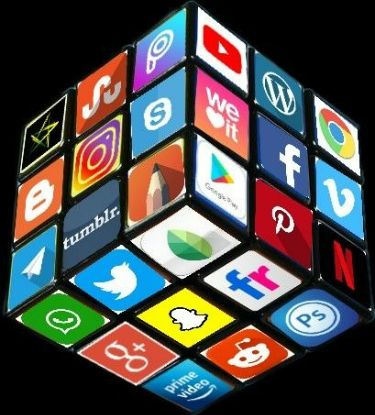Tips and Best Practices
In the age of digital communication, social media has transformed the way businesses and individuals interact with their audiences. One of the most powerful aspects of social media is its ability to foster strong, engaged communities. For brands, building a community is more than just gathering followers—it’s about creating meaningful connections that foster loyalty, trust, and advocacy. In this blog post, we will explore the essential tips and best practices for building a strong community on social media.
1. Understanding the Importance of Community on Social Media
Before diving into the strategies, it’s essential to understand why building a community on social media is so valuable:
- Enhanced Customer Loyalty: A strong community fosters loyalty. When people feel part of something larger, they’re more likely to support and promote the brand.
- Increased Engagement: Communities thrive on interaction. When you build a community, your engagement rates often soar, leading to better visibility on social media algorithms.
- Organic Growth: Communities naturally encourage word-of-mouth promotion. When members of your community are passionate about your brand, they’ll share it with others, driving organic growth.
- Real-Time Feedback: A community provides direct access to customer opinions. This feedback is invaluable for product development, customer service improvements, and marketing strategies.
- Support System: A strong community can act as a support system, where members help each other solve problems related to your products or services.
Now that we’ve established the importance of community, let’s explore how to build one effectively.
2. Define Your Community’s Purpose
Every successful community has a clear purpose. Your community should revolve around a central theme or goal that resonates with your audience. This purpose will guide your content, interactions, and the overall tone of the community. Consider the following when defining your community’s purpose:
- What Value Do You Offer? Understand the value your brand offers and how it can serve your audience. Whether it’s education, entertainment, or support, your community should fulfill a specific need.
- What Are Your Community’s Goals? Define what you hope to achieve with your community. Is it to provide customer support, build brand advocates, or simply connect like-minded individuals?
- What Is Your Brand’s Mission? Ensure that your community’s purpose aligns with your brand’s overall mission and values. This consistency will strengthen your brand identity and resonate more deeply with your audience.
For example, a fitness brand might create a community focused on healthy living tips, workout challenges, and mutual support, fostering a sense of camaraderie among fitness enthusiasts.
3. Identify and Understand Your Target Audience
To build a strong community, you need to attract the right people. Understanding your target audience’s demographics, interests, and pain points is crucial. You can gather this information through:
- Surveys and Polls: Ask your existing followers about their interests and what they want from a community.
- Social Media Analytics: Platforms like Facebook, Instagram, and Twitter offer insights into your followers’ demographics and behaviors.
- Competitor Research: Analyze your competitors’ communities to see what works for them and identify any gaps you can fill.
Once you have a clear understanding of your audience, tailor your community’s content, tone, and activities to meet their needs.
4. Choose the Right Platforms
Not all social media platforms are created equal, and each one has its unique strengths for community building. Consider the following platforms and their community-building potential:
- Facebook Groups: Ideal for creating niche communities where members can engage in discussions, share content, and participate in events. Facebook Groups also allow for moderation, which is crucial for maintaining a positive environment.
- Instagram: While Instagram is more of a content-driven platform, you can build a community through consistent engagement, hashtag usage, and Stories that encourage interaction. Instagram’s Close Friends feature is also great for exclusive content.
- Twitter: Twitter is excellent for real-time conversations and building communities around shared interests or events. Twitter Chats and hashtags can help you foster a community here.
- Reddit: Known for its tight-knit communities, Reddit is perfect for brands looking to create a forum-like space for discussions. However, Reddit requires a careful approach to avoid overt self-promotion.
- LinkedIn: LinkedIn Groups are great for B2B communities, where professionals can network, share industry insights, and collaborate.
Choose the platforms that align with your audience’s preferences and your community’s purpose.
5. Create Engaging and Valuable Content
Content is the lifeblood of your community. To keep your community engaged, you need to provide valuable, relevant, and consistent content. Here’s how to do that:
- Educational Content: Share tips, tutorials, and resources that help your community members solve problems or improve their skills.
- Interactive Content: Encourage participation with polls, quizzes, and questions. For example, asking your community for their opinions on a topic or challenge can spark lively discussions.
- User-Generated Content: Encourage your community members to share their own content, whether it’s photos, videos, or testimonials. Highlighting UGC not only provides fresh content but also strengthens community bonds.
- Exclusive Content: Offer your community members something special, such as early access to new products, exclusive discounts, or behind-the-scenes looks at your business.
- Stories and Livestreams: Use Instagram Stories, Facebook Live, or other streaming platforms to engage with your community in real-time. This personal touch can make your community feel more connected to your brand.
Consistency is key. Develop a content calendar to ensure regular updates and avoid periods of inactivity.
6. Foster Genuine Engagement
Building a community is about more than just broadcasting messages; it’s about fostering genuine engagement. Here’s how to encourage active participation:
- Respond to Comments and Messages: Show your community that you value their input by responding to their comments, questions, and messages. This two-way communication is essential for building trust.
- Ask for Feedback: Regularly seek feedback from your community on your products, services, or content. This not only provides valuable insights but also makes your community feel heard and involved in your brand’s development.
- Host Events and Challenges: Online events, such as webinars, Q&A sessions, or challenges, can boost engagement and create a sense of excitement within your community. For example, a photography brand might host a photo challenge where community members submit their best work for a chance to be featured.
- Celebrate Milestones and Achievements: Acknowledge and celebrate milestones, both for your brand and your community members. Whether it’s reaching a follower milestone or a member’s personal achievement, these celebrations can strengthen community bonds.
Creating a welcoming and inclusive environment is crucial. Make sure your community feels safe and valued, and encourage positive interactions.
7. Establish Clear Community Guidelines
For your community to thrive, it’s essential to set clear guidelines on acceptable behavior. These guidelines will help maintain a positive environment and prevent conflicts. Consider including the following in your community guidelines:
- Respectful Communication: Encourage respectful and constructive communication among members.
- No Spam or Self-Promotion: To avoid clutter and maintain the community’s focus, establish rules around self-promotion and irrelevant content.
- Conflict Resolution: Provide guidance on how conflicts should be addressed within the community. This could involve reporting issues to moderators or resolving disputes privately.
- Content Sharing Rules: Clarify what types of content are allowed and whether members can share external links or promotions.
Make these guidelines easily accessible to all members, and ensure that moderators enforce them consistently.
8. Empower Community Leaders and Moderators
As your community grows, managing it on your own can become challenging. Empowering community leaders or moderators can help you maintain a positive and engaged community. Here’s how to identify and empower leaders:
- Identify Active Members: Look for community members who are consistently active, helpful, and positive. These individuals are often natural leaders and can help guide the community.
- Offer Leadership Roles: Invite these members to take on leadership or moderation roles. This could involve managing discussions, welcoming new members, or enforcing community guidelines.
- Provide Training and Support: Ensure that your leaders and moderators have the tools and training they need to succeed. This might include access to moderation tools or guidance on conflict resolution.
Empowering community leaders not only helps you manage your community but also fosters a sense of ownership and pride among your members.
9. Leverage Social Media Tools for Community Building
Many social media platforms offer tools specifically designed to help you build and manage your community. Here are some tools you can use:
- Facebook Group Insights: Facebook provides analytics for group engagement, member growth, and post performance. Use these insights to optimize your community’s content and engagement strategies.
- Instagram Close Friends List: This feature allows you to create a more exclusive community experience by sharing content with only a select group of followers.
- Twitter Lists: Twitter Lists allow you to organize your community members and keep track of their content more efficiently.
- Reddit Flair: If you’re building a community on Reddit, use flair to categorize posts and help members navigate the community more easily.
Experiment with these tools to enhance your community’s experience and keep members engaged.
10. Continuously Analyze and Adapt
Building a strong community on social media is an ongoing process. To ensure your community continues to thrive, regularly analyze its performance and make adjustments as needed. Here’s how to do that:
- Monitor Engagement Metrics: Track metrics like post engagement, member growth, and participation rates to gauge the health of your community.
- Gather Feedback: Regularly ask your community members for feedback on what they like and what could be improved.
- Stay Updated with Trends: Social media trends change quickly. Stay informed about new features, platforms, and best practices to keep your community relevant and engaged.
- Be Flexible: Be open to making changes based on your analysis. Whether it’s adjusting your content strategy, exploring new platforms, or updating your
















Leave a Reply